
|   |

|   |
They danced, we believed: Honouring a legacy that still breathes Photos courtesy: Avinash Pasricha, Daksha Mashruwala, Srjan Archive May 6, 2025 A life, in its truest sense, is sanctified when it is gifted with the rare opportunity to witness greatness - not from a distance, but in intimate nearness. I count myself immeasurably fortunate to have lived moments woven with the presence of two of the most divine embodiments of Indian classical dance: Guru Kelucharan Mohapatra and Pandit Birju Maharaj. To speak of them merely as legends would be to limit their magnitude; they were not only masters of their respective art forms but also vessels of divine rhythm, celestial grace, and boundless creative spirit. 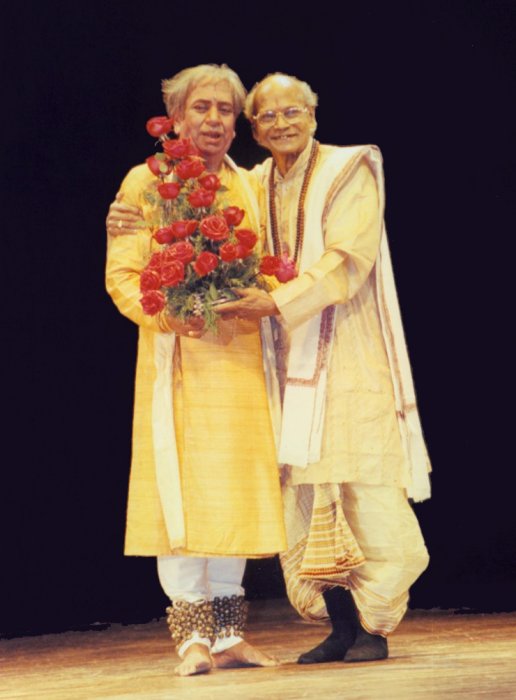 My journey with them was not confined to the stage or the rehearsal hall. It was in the quiet, unassuming spaces that I gathered pearls of wisdom - while traveling with them from city to city, accompanying their majestic renditions on the Mardala, assisting in the simple yet sacred act of preparing paan, and silently absorbing the philosophical cadence of their conversations. These were not merely memories - they were transformative experiences, each moment resonating with the vibration of legacy, discipline, and divine devotion. Their presence had a mysterious alchemy. One did not need to consciously learn; one simply absorbed. Like fire that consumes without instruction, their energy kindled a spontaneous awakening. In their proximity, the body responded as if choreographed by an invisible hand - the hands shaped mudras, the feet found rhythm, and the heart discovered rasa. Being around them was like stepping into a sacred river - each encounter a purifying dip, each interaction a revelation. They brought not just performances to life, but a way of life itself. They infused every gesture with poetry, every silence with meaning. Dance, for them, was not performance - it was prayer. The stage was not a platform - it was a sanctum. 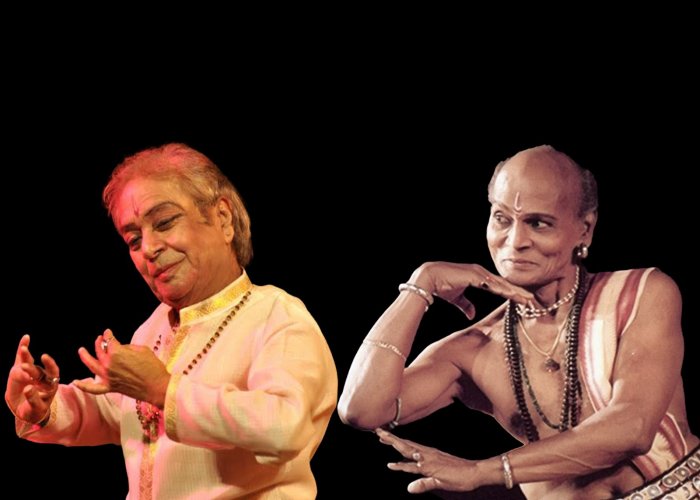 Even today, in their physical absence, their presence lingers like incense in the corridors of memory. Their voices echo - quiet but unwavering - guiding like ancient mantras. Their teachings were never just technical; they were spiritual invocations that continue to illuminate the path for countless disciples and admirers across generations. Their legacies are not relics of the past - they are living, breathing traditions that urge us to create, to uphold, to evolve. Every time I think of them, I am reminded that dance is not merely an artistic expression; it is a way of being. Their lives were offerings to that eternal spirit, and through them, we glimpsed the divine. On this World Dance Day, I offer this article as a heartfelt tribute to two towering figures in the world of Indian classical dance - Guru Kelucharan Mohapatra and Pandit Birju Maharaj - through the recollection of two unforgettable incidents, etched indelibly in my memory. These moments stand as testimony to a synchronicity so profound, it leaves one pondering the mystical convergence of two extraordinary artistic minds. They are stories of how these two maestros, rooted in their distinct classical traditions, would - through pure artistic intuition - merge into one rhythm, one rasa, one sacred breath. In their individual expressions, they became one soul in the divine act of dance.  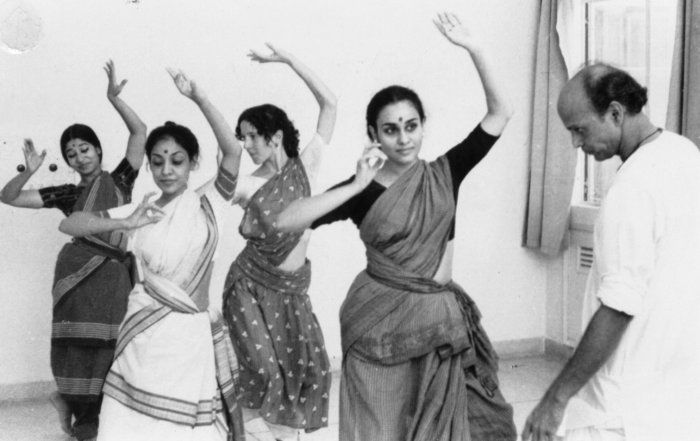 The first incident dates back to the early 1980s, when a series of Odissi and Kathak workshops were being conducted at Padatik in Kolkata, an institution nurtured by the visionary Shyamanand Jalan - an illustrious figure in Indian theatre, an exceptional director and actor, and by profession, a distinguished civil lawyer. Under his generous patronage, the atmosphere at Padatik buzzed with artistic fervour and intellectual excitement. One evening, following a particularly enriching day of workshops, a small gathering was hosted at the Metro Apartments in Esplanade, the residence of Shri Jalan and his gracious wife, Chetna Jalan. Among the invitees were Guruji (Kelucharan Mohapatra), Maharaj ji (Birju Maharaj), the acclaimed Kathak dancer Saswati Sen, myself, and a few others from the Padatik circle. The evening was light-hearted, filled with animated conversations, clinking glasses, and the quiet camaraderie that only true art can inspire. It was then that Shyamanand Jalan, with the mischievous glint of a theatre director and the insight of a connoisseur, proposed a playful yet profound experiment. "Let us test," he said, "how these two extraordinary minds perceive the same theme. Let them perform, but in isolation from each other." The idea sparked instant excitement and a touch of nervous energy. The rules were set: Guruji would perform first while Maharaj ji was locked in a separate room, unable to see or hear. Once Guruji concluded, the roles would reverse - Maharaj ji would perform while Guruji remained unaware. With great anticipation, the audience rearranged themselves, some crouching, others leaning in, eager not to miss a single movement. The room held its breath as Guruji began. He chose the episode of Gajendra Moksha - the poignant tale of the elephant king seized by a crocodile while gathering lotuses, and his fervent plea to Lord Vishnu, who descends to grant deliverance. With unparalleled expressiveness and grace, Guruji breathed life into the narrative, each movement a hymn of devotion. When his performance ended, Maharaj ji was brought out, and Guruji was gently ushered into the secluded room. Unaware of what had transpired, Maharaj ji took the stage. And then - what unfolded was nothing short of a miracle. With the same intensity, the same story was evoked again. Maharaj ji, too, performed Gajendra Moksha - without ever knowing Guruji had just enacted it. As the realization dawned upon us, the room fell into an awed, reverent silence. Not a soul moved. A long exhalation, almost collective, swept through the audience. Whispers of disbelief - "How is this possible?" - floated in the stillness. 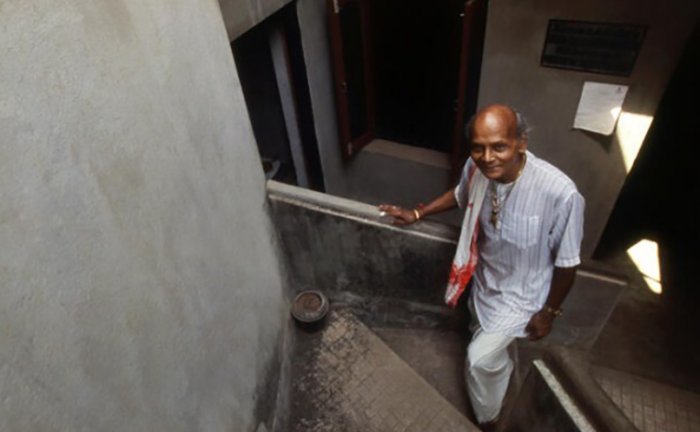 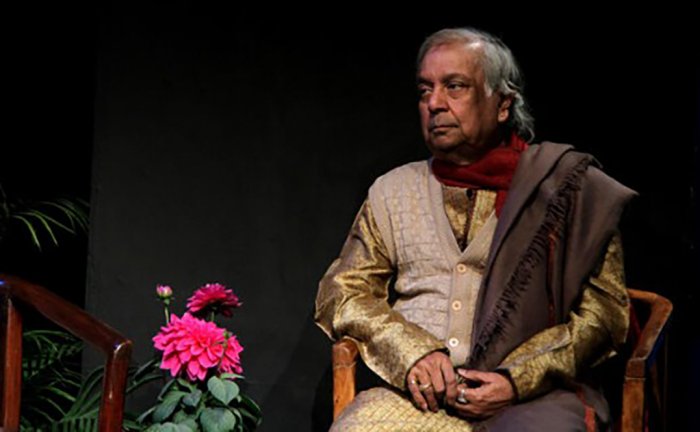 When it was time, I quietly went to open the door and let Guruji out. He emerged into a room that remained breathless, charged with wonder. All eyes were on the two masters. No one spoke. There was no need. Faces glowed with disbelief, joy, and spiritual exhilaration. Shyamanand Jalan, overcome with emotion, folded his hands and bowed deeply, touching the floor in silent homage to what he had just witnessed. Words had abandoned us. When the truth was finally revealed to the two artistes, they too were astonished. They embraced, their laughter echoing serenely like temple bells. Dinner resumed, yet something sacred lingered in the air. No one could explain how such a synchronicity occurred. How could both possibly choose the same story, the same episode, with no prior discussion? Questions galore, yet no visible clue. Even to this day, the "how" remains a mystery. Perhaps some questions do not have an answer, only memories to be cherished. Perhaps, when two souls revel in glory of artistic divinity, they remain inseparable. They become vessels of a higher rhythm, of a sacred intuition beyond logic or learning. That evening, Guru Kelucharan Mohapatra and Pandit Birju Maharaj reminded us that true art is not created - it is received. And when received in such purity, it unites hearts, transcends forms, and becomes eternal. The second incident takes us back to the year 1991, to an evening that would go on to carve a golden chapter in the annals of Indian classical arts. It was a fundraising programme titled Jugalbandi, envisioned and organized by Pandit Hariprasad Chaurasia for his Vrindavan Gurukul in Mumbai. The idea was not merely to raise funds but to raise artistic consciousness - to bring together some of the greatest living legends of Indian classical music and dance in thoughtfully curated pairings, each a confluence of divinity and discipline. The event became a landmark in the history of Indian classical performance. The stage saw rare and soul-stirring collaborations: Pandit Jasraj with Vidwan Balamuralikrishna, Pandit Hariprasad Chaurasia with Vidushi Kishori Amonkar, and most memorably, Guru Kelucharan Mohapatra with Pandit Birju Maharaj. Each pairing created a celestial resonance, but the jugalbandi of the two ultimate masters of Indian classical dance elevated the evening to a spiritual crescendo. Following their respective solo performances, Guruji and Maharaj ji came together in a thumri - the immortal composition of Pt. Bindadin Maharaj:"Bihariko apni bas kar paun, jahan jahan Charan rakh more prabhuji, tahan tahan nayan bichhaun." (In my longing to captivate Krishna, I surrender my gaze to the sacred trail of His lotus feet - wherever He steps, I lay my eyes in reverence.) 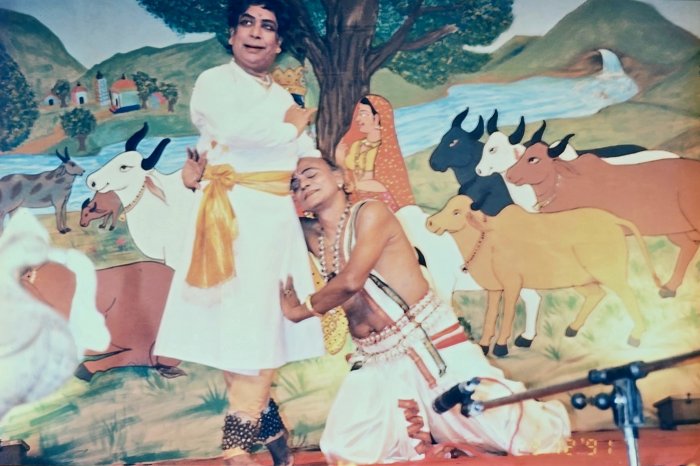 What unfolded next was more than performance - it was poetry in motion, a duet that transcended time and form. The audience, filled with rasikas and fellow artistes alike, sat spellbound. Not a breath was drawn. The space dissolved into silence, not from decorum, but from collective awe. Words had no place. Only the dance remained - devotional, majestic, and all-consuming. That jugalbandi, etched in the heart of every witness, remains an eternal flame. Even today, in their physical absence, the memory of that moment flows like sacred water through the veins of every artiste who aspires to bhakti and surrender. It cleanses, uplifts, and reminds us of what it means to embody art not just in technique, but in spirit. May such days return, even if only in glimpses - so that we may once again lose ourselves in the ocean of their sacred art, and find, in their legacy, the divine purpose of our own dance.  With time, the jugalbandi of these two great masters - Guru Kelucharan Mohapatra and Pandit Birju Maharaj - graced numerous stages across India, becoming a phenomenon that transcended the boundaries of a mere performance. It became a sacred ritual, an experience that moved audiences to tears. After each performance, auditoriums transformed into shrines of devotion. Audiences would rush to the greenroom, not merely out of admiration, but with the reverence of pilgrims seeking darshan. People longed to catch a glimpse, to offer a few words in hushed awe, to bow at their feet, or simply to touch them, hoping to absorb a fragment of their divine aura. Elderly connoisseurs and young admirers with wonder would stand in reverent silence or giggle nervously as they posed for photographs beside these giants - holding their hands, sitting near them, lingering in their presence long after the final curtain had fallen. The performance didn't end with the last note of music or the final gesture of abhinaya - the true festivity began when the audience felt they were in the company of something eternal. What was profoundly moving, and indeed remarkable, was the quiet grace with which these two masters received their admirers. Exhausted from their demanding performances, often drenched in sweat and effort, they never once betrayed even the faintest trace of fatigue or irritation. Their faces bore the same serenity that marked their art - compassionate, composed, and luminous with humility. 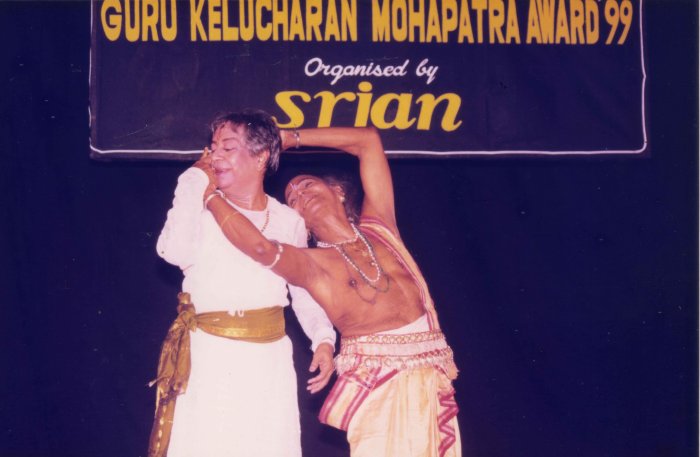  Whenever life granted me the rare privilege of being in the presence of these two great maestros - Guru Kelucharan Mohapatra and Pandit Birju Maharaj - it felt as though the boundaries of possibility dissolved before my eyes. What they created on stage, and the manner in which they created it, defied logic and transcended imagination. As a disciple, as a devoted student and humble worshipper of their art, I often found myself pondering the mystery behind their seamless performances - crafted without a single rehearsal. In most instances, both Guruji and Maharaj ji would arrive at the city of performance accompanied by their respective musicians. They would quietly check into their hotel rooms, and soon the sight that greeted us was always delightfully familiar: the two maestros seated in the hotel lobby, sharing tea, or perhaps standing along a quiet corridor admiring the architectural nuances of the space. Sometimes, they would retire to one of their rooms, where laughter flowed as easily as the stories they exchanged - preparing paan for each other with the tender affection of lifelong comrades.  When we would gingerly request a rehearsal with the musicians, both would smile knowingly and gently deflect the suggestion: "Shaam ko greenroom mein rehearsal kar lenge" - we'll rehearse in the evening at the greenroom before the show. That greenroom rehearsal, however, was a myth that never manifested. And so, as always, we would meet on stage - live, unrehearsed, and unscripted. Once the performance began, the greenroom became irrelevant. On stage, they were tuned into something far greater than choreography - an unspoken rhythm of intuition and mastery. Instructions were passed mid-performance: repeat a line, alter a phrase, adjust the tempo. Often, Maharaj ji would hum the first line of the thumri, and the musicians would follow. Both legends, through subtle signs and gestures, directed the musical flow with precision and ease. For those of us in the musician's pit, it was nothing short of exhilarating - and exhausting. With no fixed script, we performed with every muscle alert, every sense heightened, deciphering cues in real time and responding with immediacy. It demanded everything of us - and rewarded us with the unmatched fulfilment of having shared in something truly extraordinary. Each performance was a journey through improvisation, devotion, and revelation. Among the most unforgettable memories was the occasion when the legendary Ustad Zakir Hussain, affectionately known to all as Zakir Bhai, accompanied this jugalbandi. At Bangalore in Nrityagram's celebrated Vasantahabba festival in the early 90s, I had the profound honour of sharing the stage with him - Zakir Bhai on tabla for Maharaj ji, and I on mardala for Guruji. Towards the end of the performance, we would switch - tabla flowing into Odissi and mardala into Kathak - fluidly merging the percussive traditions of two classical worlds.  For a humble artiste like myself, this was not merely a performance - it was a moment of transcendence. To accompany Guruji and Maharaj ji, and to share the rhythmic space with Zakir Bhai, was akin to being enveloped in a stream of amrit, the nectar of pure art. That evening remains etched in my soul - not just as a musical memory, but as a spiritual milestone. As I write this article in memory of Guruji and Maharaj ji, I am flooded with recollections - personal, profound, and precious. I remember traveling with them from city to city, sharing meals, accompanying them on the mardala during performances, setting the stage for their recitals, and even, on one occasion, driving them in my humble Maruti van to Rabindra Mandap in Bhubaneswar in September 1999, when Maharaj ji graced the Guru Kelucharan Mohapatra Award Festival with his presence. The tapestry of my association with these legendary artists spans over two decades, woven with countless such moments - each one deserving of its own page, its own reverence. Yet, for the purpose of this humble tribute, I have chosen to share only two incidents - two jewels from a treasure trove of memories - that, to me, encapsulate the mystique, the devotion, and the artistic transcendence of these unparalleled masters. They were the pulse behind every beat, the breath within every movement, the silence between the notes. Not separate from the art - they were its very essence: dance in motion, music in form, rhythm in spirit. Even now, they course through us like an invisible current - sustaining, inspiring, and awakening. It is through their living legacy that we continue to breathe, to create, and to sustain ourselves in the sacred realm of art. 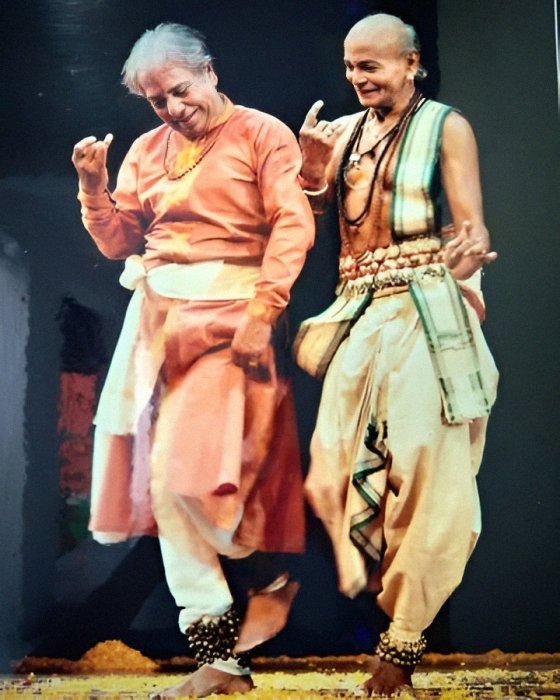 To Guru Kelucharan Mohapatra and Pandit Birju Maharaj, with folded hands and a bowed head - this is my humble offering, my pranāma at your divine feet.  Ratikant Mohapatra, as Director of Srjan and Dean of the Faculty of Arts, Communication, and Indic Studies at Sri Sri University, stands as a distinguished figure in Indian classical dance. With a career spanning over 40 years, his artistry as a dancer, choreographer, and educator has profoundly shaped Odissi's journey. Under his guidance, Srjan has earned national and global acclaim, merging neo-classical innovation with traditional grace. Honoured with the Central and State Sangeet Natak Akademi Awards and a Guinness World Record for orchestrating 555 Odissi dancers, his legacy reflects a steadfast dedication to the evolution and timeless beauty of Odissi. Post your comments Please provide your name and email id along with your comment. All appropriate comments posted with name and email id in the blog will also be featured in the site. |